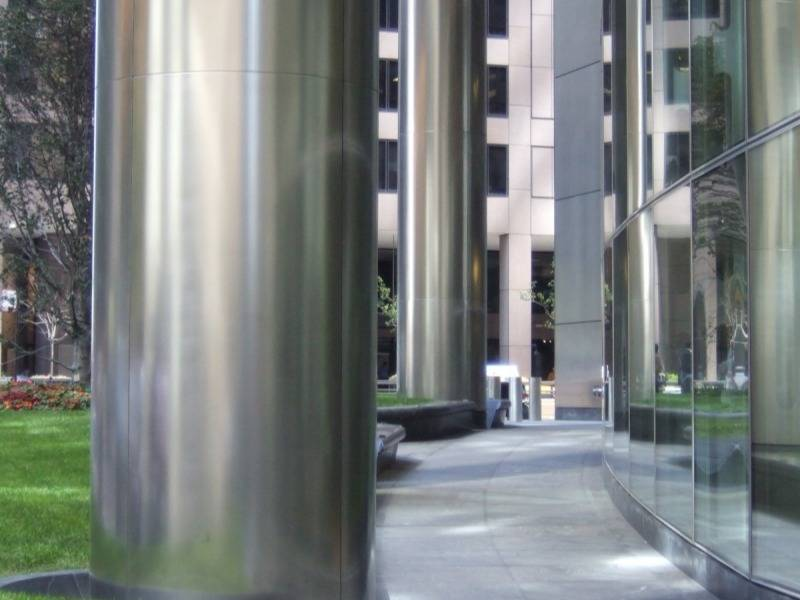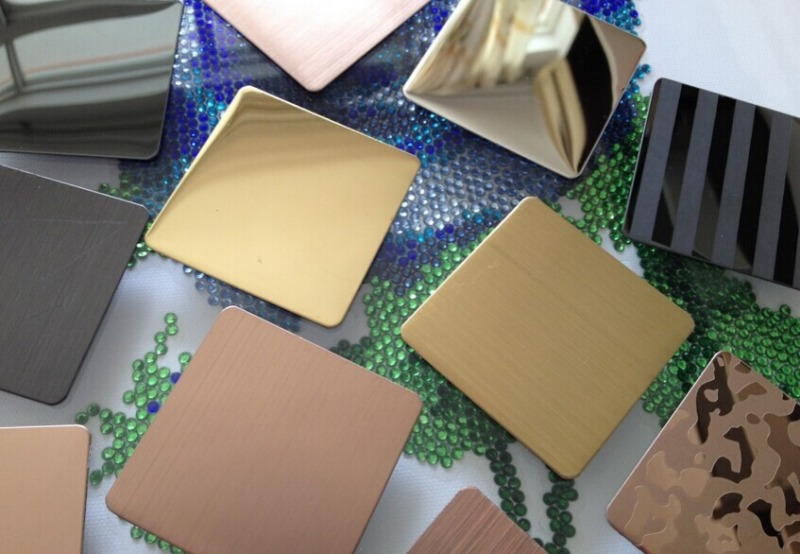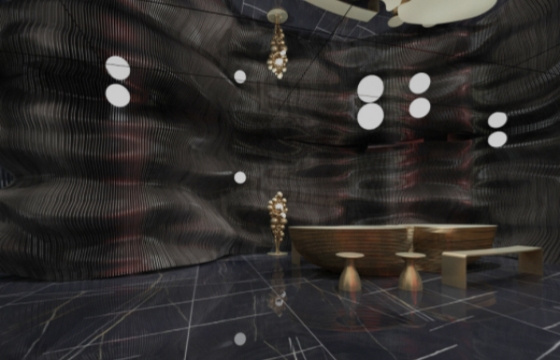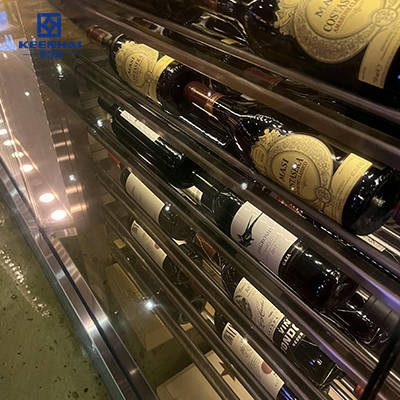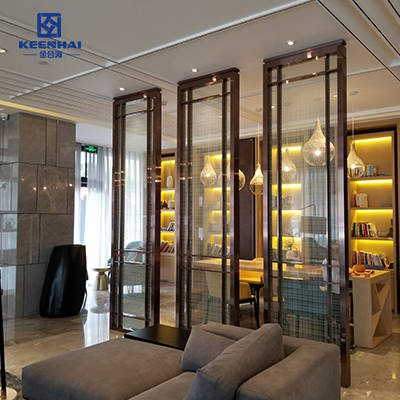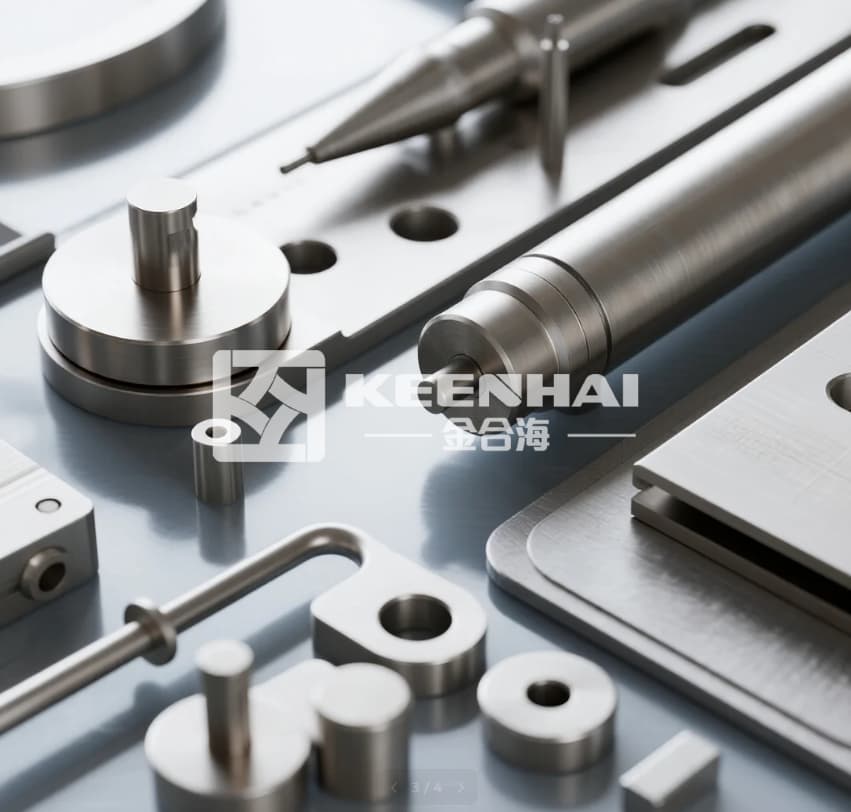Stainless steel wine cellars provide superior strength, temperature control, and long-term durability. Glass offers visual appeal and transparency, but it is more fragile and sensitive to temperature swings. For collectors seeking reliability and low maintenance, stainless steel wins; for display-focused setups, glass creates a stunning centerpiece.
1.Material Comparison: Stainless Steel vs Glass
1.1 Strength and Durability
Stainless steel is widely regarded for its exceptional strength, capable of withstanding heavy loads and impacts without bending or cracking. In real-world wine storage environments, this means a premium Stainless Steel Wine Cellar can securely hold hundreds of bottles with minimal risk of structural damage. Glass, on the other hand, while visually elegant, is inherently more fragile. Thick tempered glass can resist some impact, but it remains vulnerable to chips and breaks, especially in high-traffic areas or during installation.
1.2 Resistance to Temperature and Humidity
Wine storage requires stable conditions. Stainless steel excels at resisting temperature fluctuations and high humidity levels, making it ideal for environments where climate control may not be perfectly consistent. Glass, particularly when used without proper insulation, can allow heat transfer that slightly affects internal wine temperatures. For example, sunlight hitting a glass wine room can increase internal temperature more quickly than a steel structure.
1.3 Corrosion and Staining Factors
One of the biggest advantages of stainless steel is its corrosion resistance. Even in humid cellars, high-quality stainless steel surfaces remain unblemished and do not harbor mold or mildew. Glass is non-corrosive but can stain or show mineral deposits from cleaning water if not properly maintained.
| सुविधा | खिया नलाग्ने स्टील | गिलास |
|---|---|---|
| Strength | High, impact-resistant | Moderate, tempered glass only |
| स्थायित्व | Long-lasting, minimal wear | Prone to scratches and chipping |
| Temperature Resistance | Excellent, stable | Moderate, affected by external heat |
| Humidity Resistance | Very high, no warping | High, but condensation can occur |
| Maintenance | Easy wipe-down | Requires careful cleaning to avoid streaks |
1.4 Real-World Scenario Example
Imagine a modern home with a custom wine storage area. Installing a durable Stainless Steel Wine Racks system within a steel cellar allows homeowners to move bottles around frequently without worrying about structural damage. If the same setup used glass racks in a glass enclosure, even slight bumps during bottle handling could result in chips or scratches, reducing longevity and visual appeal.

2.Insulation and Temperature Control
2.1Thermal Retention of Stainless Steel vs Glass
Stainless steel wine cellars excel at maintaining consistent internal temperatures. Premium stainless steel walls with a thickness of 1.2–2 mm and double-layer insulation can keep internal temperatures stable within ±1°C even when external room temperature fluctuates between 18°C and 28°C. In contrast, glass enclosures, even with tempered 12–15 mm thick panels, allow more heat transfer. Sunlight hitting a glass cellar can raise internal temperature by 3–5°C within 30 minutes, which can affect sensitive wines.
Step-by-step setup for optimal thermal retention in a stainless steel wine cellar:
-
Install double-pane stainless steel panels with high-density polyurethane insulation.
-
Seal all joints with food-safe silicone to prevent airflow and humidity loss.
-
Integrate a thermostat-controlled cooling unit rated at 120–150W per cubic meter to maintain consistent temperatures.
-
ठाउँ temperature sensors at multiple points inside the cellar to monitor fluctuations within ±1°C.
-
Use stainless steel wine racks to reduce direct contact between bottles and walls, ensuring even air circulation around each bottle.
In a real-world scenario, a modern home in California installed a premium Stainless Steel Wine Cellar in a sunlit basement. The internal temperature stayed at 13–15°C year-round, despite summer days reaching 35°C, proving stainless steel’s superior thermal retention.
2.2Impact on Wine Aging and Quality
Temperature stability directly influences wine aging and quality. Wines stored in stainless steel cellars retain their aroma and flavor profile for longer periods, with aging processes proceeding at predictable rates. For instance, red wines stored at 14°C in a stainless steel cellar develop complexity over 12–18 months, whereas glass-enclosed rooms with a 2–5°C fluctuation can accelerate oxidation and degrade quality.
Comparison Table: Stainless Steel vs Glass Wine Cellars
| सुविधा | स्टेनलेस स्टील वाइन तहखाने | Glass Wine Cellar |
|---|---|---|
| Wall Thickness | 1.2–2 mm steel panels | 12–15 mm tempered glass |
| Insulation | High-density polyurethane | Standard double-pane |
| Temperature Stability | ±1°C | ±3–5°C |
| Humidity Control | 60–70% RH without condensation | Condensation possible, 55–65% RH |
| Cooling Unit Power | 120–150 W/m³ | 150–200 W/m³ to compensate |
| Wine Aging Impact | Predictable, maintains flavor & aroma | Risk of oxidation and faster aging |
| Air Circulation | Uniform with steel racks | Can be uneven without specialized racks |
| Maintenance | Easy wipe-down, corrosion-resistant | Requires careful cleaning to avoid streaks |
Practical tip: Install durable स्टेनलेस स्टील वाइन र्याकहरू inside a steel cellar. The racks enhance airflow, reduce bottle-to-bottle contact, and keep wine labels intact over decades, making the storage system both functional and visually striking.

3.Design and Aesthetic Considerations
3.1Modern and Sleek Look of Stainless Steel
Stainless steel wine cellars bring a modern, industrial elegance to any home or commercial space. High-quality steel panels with a brushed or polished finish create a reflective surface that complements contemporary interiors. Walls made of 1.5–2 mm thick stainless steel maintain rigidity while adding a sleek, professional appearance. Custom lighting installed along the ceiling or behind racks can enhance metallic reflections, creating a visually stunning environment.
Step-by-step setup for achieving a modern stainless steel look:
-
Choose polished or brushed stainless steel panels with anti-fingerprint coating to keep surfaces clean.
-
Install durable Stainless Steel Wine Racks or shelves at uniform intervals, spacing bottles by 10–12 cm for balanced airflow and visual symmetry.
-
Add LED strip lights with adjustable color temperature (2700–4000K) behind racks or along perimeter walls.
-
Apply matte black or metallic accents for handles, trims, or door frames to enhance contrast and design depth.
-
Verify alignment and spacing using a laser level to ensure a precise, high-end finish.
A real-life example includes a modern apartment in New York City, where a premium Stainless Steel Wine Cellar was installed in a basement corner. The combination of polished steel walls, uniform racks, and warm LED lighting made the cellar both functional and visually striking, impressing visitors immediately upon entry.
3.2Transparency and Visual Appeal of Glass
Glass wine cellars offer openness and light diffusion, allowing wine collections to become a centerpiece of a room. Tempered glass panels, 12–15 mm thick, provide safety while maintaining transparency. Glass enclosures visually enlarge a space, making them ideal for apartments or small basements. Combining glass with stainless steel frames or brackets creates a balance between modern aesthetics and structural support.
Tips for enhancing glass cellar visual appeal:
-
Use frameless or minimal-frame tempered glass to maximize transparency.
-
Combine with interior LED lighting that highlights bottle labels without producing heat.
-
ठाउँ stainless steel or wood wine racks inside glass enclosures to introduce texture and contrast.
-
Install sliding or hinged doors with magnetic seals to reduce vibration and ensure a clean visual line.
In a luxury Miami penthouse, a glass wine cellar spanning 3 meters wide by 2 meters high incorporated stainless steel brackets and LED accents. The sunlight filtering through the glass created dynamic reflections on bottles, producing a gallery-like effect.
3.3Customization Options for Both Materials
Both stainless steel and glass allow extensive customization, adapting to room layout, bottle quantity, and design preferences. Stainless steel excels in modular configurations, where panels and racks can be sized to store 50–500 bottles. Glass cellars shine when showcasing collections, with options like tinted glass, frosted panels, or combination materials.
Customization process:
-
Measure available space accurately, noting height, width, depth, and wall alignment.
-
Determine bottle capacity requirements (e.g., 100, 250, 400 bottles).
-
Choose primary material: stainless steel for durability, glass for visual impact.
-
Select shelving or rack type: fixed, adjustable, or modular.
-
Incorporate lighting, handles, and trims that match room aesthetics.
-
Verify installation alignment and functionality before final use.
Example scenario: अ Los Angeles home installed a combination design: a modern PVD stainless steel solution frame with tempered glass panels. The steel provided strength and temperature stability, while glass allowed the wine collection to be fully visible, blending durability with visual appeal.
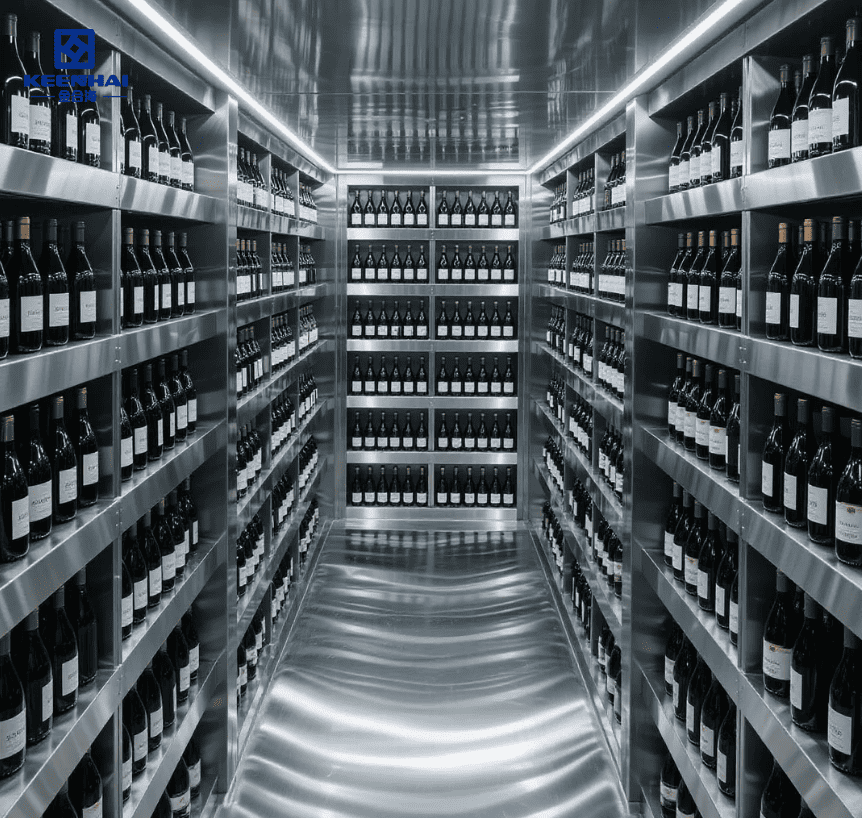
4.Cost and Value Analysis
4.1Initial Purchase Price Comparison
Stainless steel wine cellars tend to have a higher upfront cost than glass, but their durability and long-term benefits often justify the investment. For a standard 200-bottle stainless steel cellar, prices typically range from $6,000 to $9,500, depending on panel thickness, rack type, and finish quality. In contrast, a glass wine cellar of similar capacity usually costs $4,500 to $7,000, with additional costs for tempered or laminated glass, specialized hardware, and safety features.
Step-by-step considerations for budgeting your wine cellar purchase:
-
Measure your available space accurately to determine required cellar dimensions.
-
Decide on material preference: stainless steel for strength and longevity, glass for aesthetics and display.
-
Choose rack type: modular stainless steel racks or custom glass shelving.
-
Include costs for cooling units, LED lighting, and climate control accessories.
-
Add installation and labor expenses, which typically range from $500 to $1,200 depending on complexity.
A real-life example includes a San Francisco home installing a premium स्टेनलेस स्टील वाइन तहखाने for 250 bottles. The total initial investment reached $8,200, including racks, lighting, and cooling, but the homeowner valued the structural strength and aesthetic integration over cheaper alternatives.
4.2Long-Term Investment and Lifespan Benefits
Stainless steel provides exceptional long-term value due to its durability and low maintenance needs. With proper installation, a steel cellar can last 20–30 years or more, with minimal risk of corrosion or warping. Glass cellars, while attractive, generally require 10–15 years of careful maintenance before replacements or repairs may become necessary.
Key factors affecting long-term value:
-
Maintenance frequency: Stainless steel surfaces only need a wipe-down every 2–4 weeks, while glass requires polishing to avoid streaks and mineral buildup.
-
Energy efficiency: Stainless steel’s insulation reduces cooling energy consumption by 10–15% compared to glass enclosures.
-
Resale value: Homes with stainless steel wine cellars tend to retain value due to durability and professional appearance.
Comparison Table: Stainless Steel vs Glass Wine Cellars – Cost and Lifespan
| सुविधा | स्टेनलेस स्टील वाइन तहखाने | Glass Wine Cellar |
|---|---|---|
| Initial Purchase Price | $6,000–$9,500 | $4,500–$7,000 |
| Installation Cost | $500–$1,200 | $500–$1,200 |
| Lifespan | 20–30+ years | 10–15 years |
| Maintenance Frequency | Every 2–4 weeks | Weekly polishing required |
| ऊर्जा दक्षता | 10–15% lower cooling cost | Standard cooling cost |
| Resale Value | High, premium look | Moderate, depends on condition |
Practical tip: Combine a modern PVD stainless steel solution with adjustable racks and modular layout. The initial price may be higher, but it ensures long-term stability, reduced energy costs, and lasting aesthetic appeal, making it a smarter investment for serious wine collectors.
Ready to pick your cellar? View our complete stainless steel wine cellar product range.











